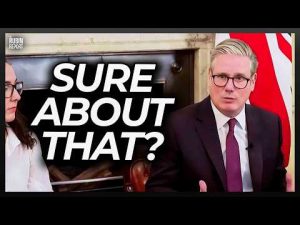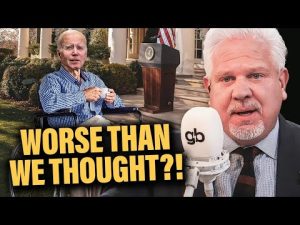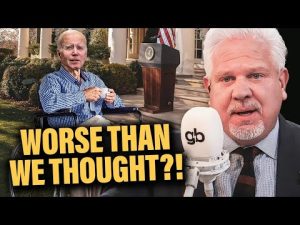In a recent spirited discussion that felt more like a Star Wars Jedi duel than a debate, two commentators faced off over whether democracy is an American value. On one side was a self-proclaimed defender of democratic principles, armed with references to the Constitution, while the other stood resolutely against the notion that democracy, in its traditional sense, is what the Founding Fathers envisioned for the United States. This clash of ideas raises compelling questions about the very foundation of American governance.
The heart of the debate circled around the semantics of “democracy” versus “constitutional republic.” One commentator asserted that the word “democracy” appears in the Constitution, claiming it establishes elections in Article One, Section Two. However, the opposing side shot back with fervor, noting that while the spirit of representative governance may be present, the word itself is strikingly absent from the nation’s founding documents. This led to a deep dive into the distinction between two forms of governance that have evolved across history: a democracy where majority rule reigns supreme and a constitutional republic designed to protect the rights of minorities against the whims of the majority.
As the conversation unfolded, it became increasingly evident that the commentators viewed the essence of American governance through very different lenses. The champion of democracy argued that regular elections and the participation of citizens in choosing their leaders equated to a democratic system. Yet, the spirited opponent contended that just because citizens vote doesn’t inherently make the system a democracy. In fact, they emphasized that citizens are actually voting for representatives who cast votes on their behalf, underscoring the republican nature of the system.
It’s not just a simple disagreement over definitions; it’s a fundamental clash in how Americans interpret their own governing principles. The argument drew on the Federalist Papers—those pivotal essays penned by Hamilton, Madison, and Jay—where the term “democracy” was painted in a less-than-flattering light. The Founding Fathers viewed pure democracy with skepticism, warning against the potential dangers of unchecked majority rule. Instead, they favored a framework that included checks and balances, ensuring that individual rights and liberties remained protected.
While both sides presented valid points about governance, this discussion transcended mere semantics. It begs the question: what does it mean to have a government that is truly representative of the people? Is it through direct voting on issues—akin to town hall debates—or through a structured system of representatives? In a world where definitions can be as slippery as a greased pig at a county fair, perhaps the true challenge will be finding a balance between these frameworks that satisfies the diverse opinions of the American populace.
In the end, this lively exchange serves as a reminder that the American political landscape is as vibrant and complex as the nation itself. One can’t help but chuckle at the vast array of interpretations and passionate beliefs that keep these discussions alive. While it may not be possible to definitively proclaim one side the winner, what stands clear is the importance of such debates in understanding the evolving narrative of democracy—or should we say, representative governance—in America.







